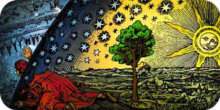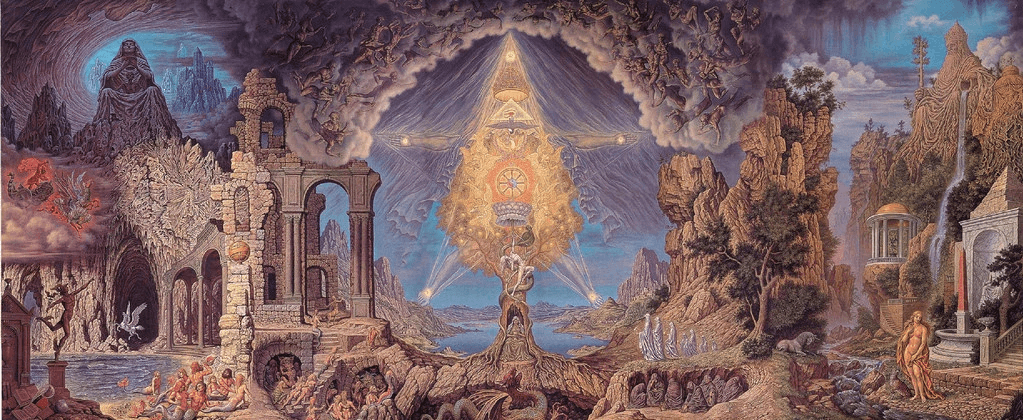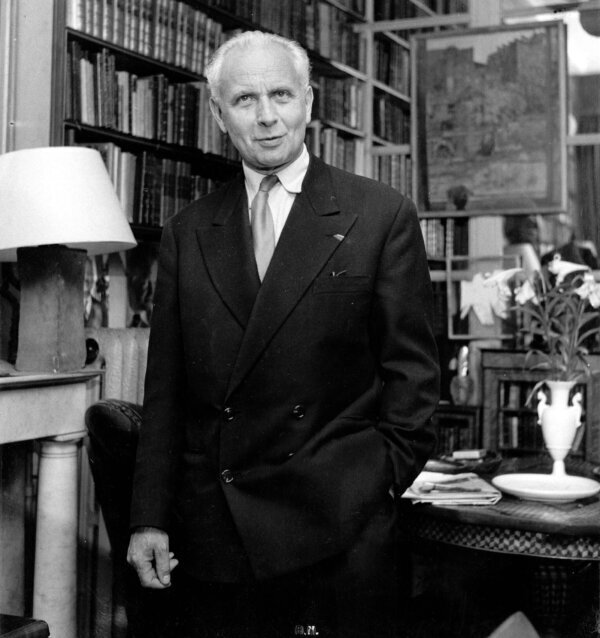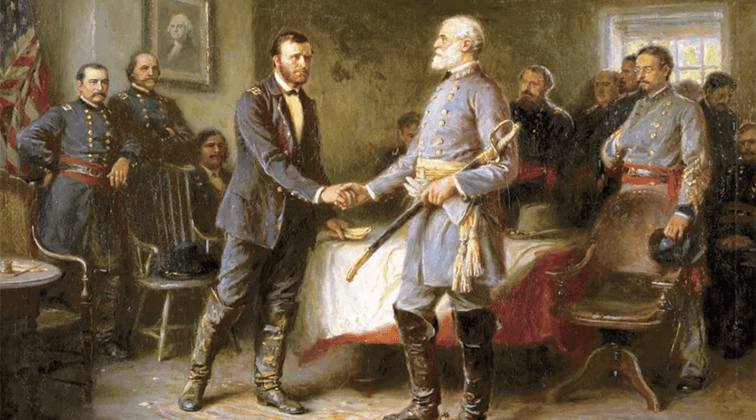Gnosticism

Gnosticism is an extreme religious sensibility from the early Christian era that has influenced twentieth century thinkers in their understanding of the modern world. Having its origins in the second century A.D., Gnosticism has been adopted by conservative thinkers to diagnose and to criticize certain characteristics of the modernity. Philosophers such as Eric Voegelin, Hans Jonas, and Thomas J. J. Altizer have compared the secularism and revolutionary messanism of modern intellectual and political movements with the fundamental features of ancient Gnosticism.
Ancient Gnosticism blossomed during the second through the fifth centuries A.D. in the Mediterranean world and became the heretical foil against which Christian dogma defined itself. It was a series of diverse sects that were formed around charismatic leaders such as Simon Magus, Valentinus, Basilides, Marcion, and Mani. Although the ancient Gnostics rejected dogma in favor of individual speculation and revelation, they did share some fundamental metaphysical and theological beliefs. The Gnostics believed the created world was evil as a result of a divine catastrophe: a transcendent god either became entrapped in pre-existing matter or gave birth to an evil god, the Demiurge, who proceeded to fashion an evil realm of materiality. The Gnostic believer’s attitude towards his body and the material universe therefore is one of hostility and resentment.
Yet salvation from this evil material condition was possible. A divine spark remained in the human soul that sought to return to a transcendent good god. The remembrance of this divine spark required gnosis: a special type of knowledge of the divine mysteries of the world. This knowledge is reserved only for an elite. Since the elite Gnostic possesses absolute knowledge of the mysteries of the world, he does not have to make compromises with the status quo in the pursuit of his dream of ultimate liberation from his body and the material universe. In this sense, ancient Gnosticism is both world-rejecting and subversive in its outlook towards the reality.
Prior to the mid-nineteenth century, ancient Gnosticism was known exclusively through the anti-heretical writings of the Church Fathers Hippolytus, Irenaeus, Tertullian, and others. The first discovery of ancient Gnostic texts was The Refutation of the Heresies by Hippolytus and the Coptic Pistis Sophia in 1851. Soon other Gnostic texts such as the Hymn of the Pearl, Apocryphal Acts of the Apostles, and Odes of Solomon were discovered and entered into the cultural mainstream at the beginning of the twentieth century. The initial discovery of the original Gnostic texts occurred when the twin canons of the western tradition – Christianity’s faith and Enlightenment’s reason – were coming under severe attack and became increasingly regarded as sterile and exhausted.
Confronted with a dying tradition, cultural and intellectual elites began to look for alternative roots in their history to make sense of the modern world. The rediscovery of the Gnostic texts provided such narrative source to understand modernity and ultimately became the predominant paradigm of the twentieth century. Gnosticism has influenced C. G. Jung’s analytical psychology, Gershom Scholem’s revolutionary messianism, Harold Bloom’s literary criticism, Han Jonas’ and Thomas J. J. Altizer’s existentialism, and Eric Voegelin’s “new science of politics.” In all of these thinkers Gnosticism is identified with a particular mind-set of displacement, alienation, and recognition of one’s specialness in the universe.
In the ancient Gnostics, Jung believed he had discovered the earliest forerunners of modern psychologists in their concept of redemption through self-knowledge. The Gnostic drama unfolds in the dualistic opposition between the conscious and unconscious poles of the human psyche. According to Jung, the differentiated ego emerges out of the primordial unconscious, just as the Gnostic Demiurge emerges out of the transcendent god. The conscious self forgets its original home, becomes alienated from itself, and believes itself to be autonomous and powerful until the unconscious reveals itself again through gnosis. Jung’s three-stage process of ego formation and individuation culminates into the reintegration of the self, like the ancient Gnostic reincorporation of the human divine spark with a transcendent god.
Like Jung, Gershom Scholem also employs a three-stage process in his historical unfolding of religious conscious. The first stage is the immediate presence of gods in nature, the second stage is the introduction of religion that isolates man from nature, and the third and final stage is the bridge between God and man in the secret path of spiritual mysticism. For Scholem, the Gnostic paradigm has influenced Jewish mysticism in providing a consoling framework to understand the Jewish condition of exile. Just like the cosmic exile of the human spirit, the Jewish people have been exiled from their land of Israel. Scholem traces the course of these Gnostic impulses from the late antiquity’s merkabah mysticism to medieval Kabbalahism to the seventeenth and eighteenth centuries’ messianic Jewish movements to modern-day Hasidism.
Harold Bloom incorporates Gnosticism into his literary theory of the agon. For Bloom, the reading of poetry is a form of gnosis. The reader achieves “a realization of events in the history of your spark or pneuma, and your knowing is the most important movement in that history.” However, this realization is more than a transcendental experience: it is an attempt to usurp the foremost place of one’s temporal predecessor in the literary world. By attempting to supplant his temporal predecessor, the reader will challenge his predecessor’s authority, ultimately reaching back to the most authoritative text in the West, the Bible.
For Hans Jonas’ and Thomas J. J. Altizer’s existential philosophies, Gnosticism is merely a diagnostic tool to understand the modern world. In comparing ancient Gnosticism with the Gnostic character of modernity, they focus on two points: 1) the central experience of exile, homelessness, and alienation from the world; and 2) the experience of the “death” of God in the modern world that is comparable to the ancient Gnostic’s alien god from the material universe. But whereas the alien and transcendent God of the ancient Gnostics held out the promise of redemption through gnosis, modernity lacks this metaphysical dimension and this marks its specifically nihilist and immanent character.
Eric Voegelin shares Jonas’ analysis in the concept of Gnosticism to diagnose the modern world. For Voegelin, the essence of modernity is “the growth of Gnosticism.” All intellectual and political movements that aim to correct the world flaws are Gnostic. The self-deifying modern Gnostic redeemers exploit the passions of the people and resort to violence in their transformation of the wretched world into a utopian dream. Voegelin included progressivism, scientism, positivism, communism, fascism, and psychoanalysis as Gnostic in his exhaustive critique of the modern age. For Voegelin, Gnosticism was primary a mind-set characterized that 1) man was not responsible for the evil he finds in himself, 2) he has a right to blame someone or something else, and 3) his salvation depends upon his own efforts to correct the flaws in reality. Dissatisfied with present reality, the modern Gnostic can confidently hope that with increased knowledge he will be able to transform the world into his own image.
Several other philosophers have used Gnosticism in their understanding of the modern world: Gerald Hanratty emphasizes the Gnostic characteristics of Promethean rebellion, self-deification, and salvation through knowledge in the millenarian movements from the late Middle Ages to post-modernity; Carl Raschke claims that the German Romantics, American religious cultists, and pop psychology are latter-day Gnostics; and Micha Brumlik traces Gnostic elements from Schopenhauer to Heidegger in their support of political tyranny by self-deified world redeemers. Theologians like Elaine Pagels and Michael Williams point out that Gnosticism reveals the diverse elements in the origins of Christianity and the Gnostic emphasis on direct religious experience could have enriched the Christian tradition. Finally, there are those who have employed the Gnostic narrative in their aesthetic theories such as Norbert Bolz, Kirsten Grimstad, Cyril O’Regan, Michael Pauen, and William Worringer; and Gnostic motifs appear in contemporary fiction in the works of Walker Percy, Flannery O’Connor, William Gaddis, and Thomas Pynchon.
Although thinkers are divided whether Gnosticism is positive, there are some problems studying Gnosticism as a modern phenomenon. According to Stephen McKnight, Carl Raschke, and Gerald Hanratty, there are some features of modern Gnosticism that seem to be incompatible with the fundamental features of ancient Gnosticism, such as the modern Gnostic desire to transform the world which would have been reputed by ancient Gnostics who sought to escape it. Moreover, the pro-cosmic, monistic, and evolutionary underpinning of modern intellectual and political movements are difficult to reconcile with the anti-cosmic, dualist, and devolutionary characteristics of ancient Gnosticism. However, thinkers like Cyril O’Regan contend that the Gnostic narrative not only permits room for differences between modern and ancient forms of Gnosticism but can assist thinkers to understand and to diagnose the modern world.
References
___________. www.gnosis.org
Altizer, Thomas J. J. “The Challenge of Modern Gnosticism.” Journal of Bible and Research 30 (1962): 18-25
Bloom, Harold. Agon: Toward a Theory of Revisionism. Oxford: Oxford University Press, 1982.
___________. The American Religion: The Emergence of a Post-Christian Nation. New York: Simon and Schuster, 1992.
___________. Omens of Millennium: The Gnosis of Angels, Dreams, and Resurrection. New York: Riverhead, 1996.
Bolz, Norbert. Stop Making Sense. Würzburg: Königshausen & Neumann, 1989.
Brooks, Cleanth. “Walker Perecy and Modern Gnosticism” Southern Review 13 (1977): 677-87.
Brumlik, Micha. The Gnostics: The Dream of Human Self-Redemption. Frankfurt am Main: Eichborn, 1992.
Cunningham, Rodger. “When You See Yourswelf: Gnostic Motifs and Their Transformations.” The Recognitions” Soundings: An Interdisciplinary Journal 71 (1988): 619-37.
Eddins, Dwight. The Gnostic Pynchon. Bloomington: Indiana University Press, 1990.
Grimstad, Kirsten. The Modern Revival of Gnosticism and Thomas Mann’s Doktor Faustus. Rochester, NY: Camden House, 2002.
Hanratty, Gerald. Studies in Gnosticism and the Philosophy of Religion. Dublin: Four Court Press, 1997.
Ireland, Patrick J. “The Sacred and the Profane: Redefining Flannery O’Connor’s Vision.” In Realist of Distances: Falnnery O’Connor Revisited.
- Karl-Heinz Westarp. Aarhus, Denmark: Aarhus University Press, 1987. 186-96.
Jonas, Hans. Gnosis und sp@tantiker Geist. G`ttingen: Vandehoeck & Ruprecht, 1954.
___________. The Gnostic Religion: The Message of the Alien God and the Beginning of Christianity. Boston: Beacon Press, 1963.
Jung, C. G. Memories, Dreams, Reflections. Trans. Richard and Clara Winston. New York: Vintage, 1965.
McKnight, Stephen. “Voegelin’s New Science of History.” Eric Voegelin’s Significance for the Modern Mind. ed. Ellis Sandoz. Baton Rouge: Louisiana State University Press, 1991. 46-70.
O’Regan, Cyril. Gnostic Return in Modernity. Albany: State University of New York Press, 2001.
Pagels, Elaine. The Gnostic Gospels. New York: Random House, 1979.
Pauen, Michael. Dithyrambists of Decline: Gnosticism in Modernist Aesthetics and Philosophy. Berlin: Akademie Verlag, 1994.
Raschke, Carl. An Interruption of Eternity: Modern Gnosticism and the Origins of the New Religious Consciousness. Chicago: Nelson-Hall, 1980.
Scholem, Gershom. Major Trends in Jewish Mysticism. New York: Schocken, 1961.
___________. Jewish Gnosticism, Merkabah Mysticism and the Talmudic Tradition. New York: Jewish Theological Society of America, 1960.
___________. The Messianic Idea in Judaism: And Other Essays on Jewish Spirituality. New York: Schocken, 1971.
Segal, Robert, June Singer, and Murray Stein, eds. The Allure of Gnosticism: The Gnostic Experience in Jungian Pyschology and Contemporayr Culture. Chicago: Open Court, 1995.
Voegelin, Eric. New Science of Politics. Chicago: University of Chicago Press, 1952.
___________. Science, Politics, and Gnosticism: Two Essays, ed. Ellis Sandoz. Washington D.C.: Regenery Publishing, 1997.
William, Michael. Rethinking Gnosticism: An Argument for Dismantling a Dubious Category. Princeton: Princeton University Press, 1996.
Worringer, William. Abstraction and Empathy: A Contribution to the Psychology of Style. trans. Michael Bullock. New York: International Universities, Press, 1953
This essay was originally published in American Conservatism: An Encyclopedia. Jeremy Beer, Bruce Frohnen, Jeffery Nelson, eds. (Intercollegiate Studies Institute Books, 2006)




